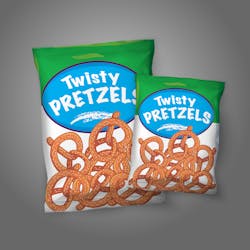One of the great things about micro markets is that operators aren’t confined to selling a product that fits a specific size. With the advent of micro markets, operators have the opportunity to offer SKUs not traditionally available in vending which allows for variety in product offerings in every category.
Despite this opportunity, bigger product sizes aren’t necessarily better. In fact, consumer lifestyle changes towards convenient and ‘healthy’ food and beverage options are helping drive a trend to single serve package choices.
Single serve meets consumer preferences
In 2015, Starbucks introduced a “Mini Frappuccino” for sale for a limited-time. This “mini” treat was 10-ounces and reportedly sold for 20 to 30 cents less than the “small”. VendingMarketWatch.com reported that the new drink increased overall store sales in test markets and appealed to consumers who were opting for smaller, ‘healthier’ versions of their favorite foods and beverages.
The move towards ‘mini’, single serve packaging is happening throughout the food and beverage industry. Packaged Facts reports that small products meet the consumer desire for convenience, as well as address overall health concerns. Consumers can enjoy the foods that they crave in a portion, calorie controlled size.
Consumers are seeking not just ‘minis’ and single serve packages, but other ‘grab and go’ products, too. In fact, convenience is an important factor for consumers who snack. Mintel reported that 77 percent of snackers prefer ready-to-eat snacks over those you have to prepare.
Manufacturers respond
Manufacturers are offering single serve snacks that meet this growing need. In fact, Kellogg’s recently identified single serve pack sizes as a growth strategy in the next three to four years, FoodBusinessNews.net reports. The company just revealed its Kellogg's To Go Breakfast Mix single-serving pouches and increased the cereal offerings in its grab-n-go cups.
Large snacking company Mondelez International additionally will focus on smaller sizes for its brands, the Chicago Tribune reports, and Coca-Cola is selling products in smaller packages, too. Sales of Coca-Cola’s smaller sizes, including its mini cans, according to TIME, were up 9 percent through the first 10 months of 2014, meanwhile sales of its 12-ounce cans and 2-liter bottles were flat during that same time period.
Optimization in micro markets
Smaller products and packaging designed for snacking on the go have been extremely popular and at relatively high price points have helped drive dollar sales higher, Packaged Facts noted.
In micro markets, operators may have the ability to drive dollar sales with single serve options, especially with 94 percent of Americans snacking at least once per day.
In fact, one Midwest-based, micro market-only operator revealed that large convenience store-size snacks don’t sell as well in some of his micro markets as single serve items do. This isn’t a challenge for him, however, because he is able to make a higher profit off of smaller, single serve items.
Single serve, smaller-sized items meet a consumer trend for ‘healthy’ snacking (whether it’s perceived or real) and can also provide the on-the-go, convenient food and beverage experience consumers crave.





